Podcasting
How Much Can Podcasts Make?
Leverage your podcasting potential and discover how top podcasters can earn millions annually, leaving you intrigued about the possibilities.

Top podcasters can earn millions annually, influenced by audience size, engagement, and monetization strategies. Those with around 10,000 downloads per episode typically make $500 to $900. Successful podcasters like Joe Rogan and Karen Kilgariff have acquired substantial wealth through podcasting. Revenue streams vary from sponsorships to exclusive content. Understanding how to maximize these strategies boosts earnings. Various platforms connect podcasters to sponsors for monetization. Podcasting revenues hit $18.52 billion in 2022, with ad income playing a significant role. Building a loyal audience and optimizing revenue streams are essential for earning potential. Notable success stories include Joe Rogan's $200 million Spotify deal.
Key Takeaways
- Podcast earnings vary based on audience size, engagement levels, and chosen monetization strategies.
- Successful podcasters can earn millions annually through sponsorships, ads, merchandise sales, and listener donations.
- Top podcasters like Joe Rogan, Karen Kilgariff & Georgia Hardstark, and Bill Simmons have achieved significant wealth.
- Revenue potential grows with loyal audiences, effective monetization strategies, and understanding listener demographics.
- Platforms like Ad Results Media, Adopter Media, and AdvertiseCast connect podcasters with sponsors for revenue generation.
Average Earnings of Podcasters
When aiming to determine the average earnings of podcasters, one must consider various factors such as audience size, engagement levels, and chosen monetization strategies. Successful podcasters can earn varying amounts, with top podcasters raking in millions annually.
The key to boosting podcast earnings lies in fostering audience engagement and cultivating a loyal listener base. By understanding what resonates with their audience, delivering consistent and valuable content, and implementing effective monetization strategies, podcasters can increase their earnings significantly.
Those with around 10,000 downloads per episode typically earn between $500 to $900 per episode, showcasing the potential for growth with a dedicated audience. The correlation between audience size, engagement, and earnings is evident, highlighting the importance of building a strong connection with listeners.
Factors Influencing Podcast Earnings

When it comes to podcast earnings, factors like audience size and the type of revenue streams utilized can have a substantial impact on how much a podcast can make.
Understanding how to analyze and maximize these revenue streams can lead to increased earnings for podcasters.
As podcasters, we need to take into account the influence of our audience size and the effectiveness of our monetization strategies on the overall earnings potential of our podcasts.
Revenue Streams Analysis
Analyzing the revenue streams of podcasts involves considering various factors that directly impact podcast earnings. Podcasters can generate revenue through sponsorships, affiliate marketing, merchandise sales, premium content, and live events.
Sponsorship rates are influenced by CPM, download numbers, ad placement, and listener demographics. Monetization via affiliate marketing offers commissions ranging from 5% to 30% for promoting products or services to the podcast audience.
Other monetization strategies include listener donations, crowdfunding, consulting services, and selling exclusive content. To maximize earnings, podcasters need to focus on growing their audience size, increasing engagement levels, implementing effective monetization strategies, and understanding their listener demographics.
Audience Size Impact
Understanding the impact of audience size on podcast earnings is essential for podcasters looking to maximize their revenue potential.
The number of downloads directly influences podcast earnings, affecting advertising rates and sponsorship opportunities. Podcasters with a loyal audience can attract higher rates for advertisements, showcasing the importance of building a strong listener base.
A larger audience opens up various monetization opportunities, allowing podcasters to explore different revenue streams. By focusing on growing an engaged listener base, podcasters can enhance their income potential through increased audience size.
Ultimately, the size and dedication of the audience play a significant role in determining the success and profitability of podcasts in the competitive landscape of podcasting.
Top Earning Podcasters
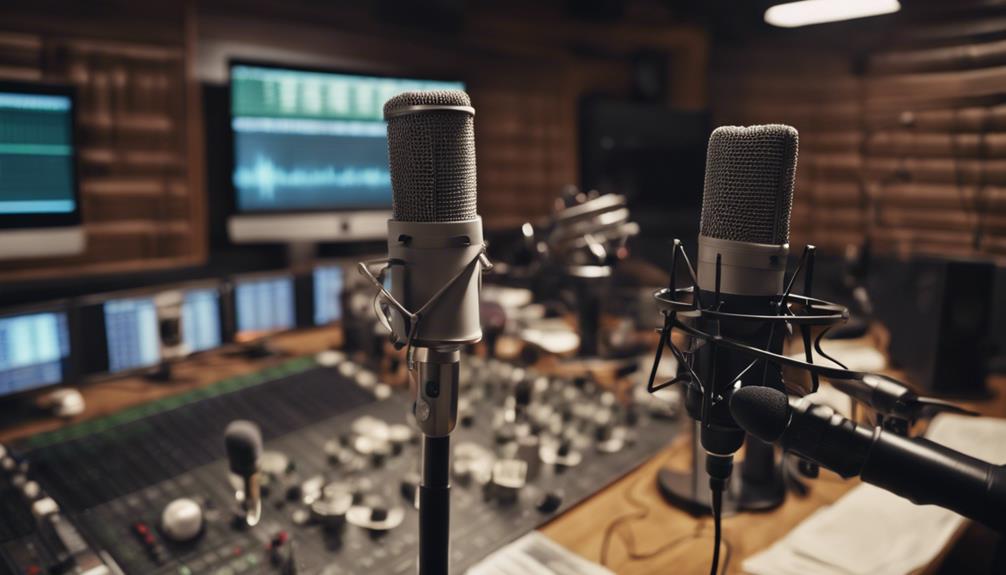
Among the top earning podcasters, Joe Rogan stands out with his exclusive Spotify deal worth at least $200 million. This showcases the immense income potential in the podcasting industry.
Karen Kilgariff & Georgia Hardstark, hosts of 'My Favorite Murder,' and Dax Shepard, host of 'Armchair Expert,' both have a net worth of $40 million, emphasizing the lucrative nature of successful podcasts.
Additionally, Bill Simmons, host of 'The Bill Simmons Podcast,' boasts a net worth estimated between $100-150 million, highlighting the substantial earning potential for top podcasters.
The success of the Chapo Trap House network, earning millions annually, further illustrates the diverse range of prosperous podcasting ventures. These figures demonstrate that podcasting can be a highly lucrative field for those who create engaging content and attract a large audience.
Podcast Monetization Strategies
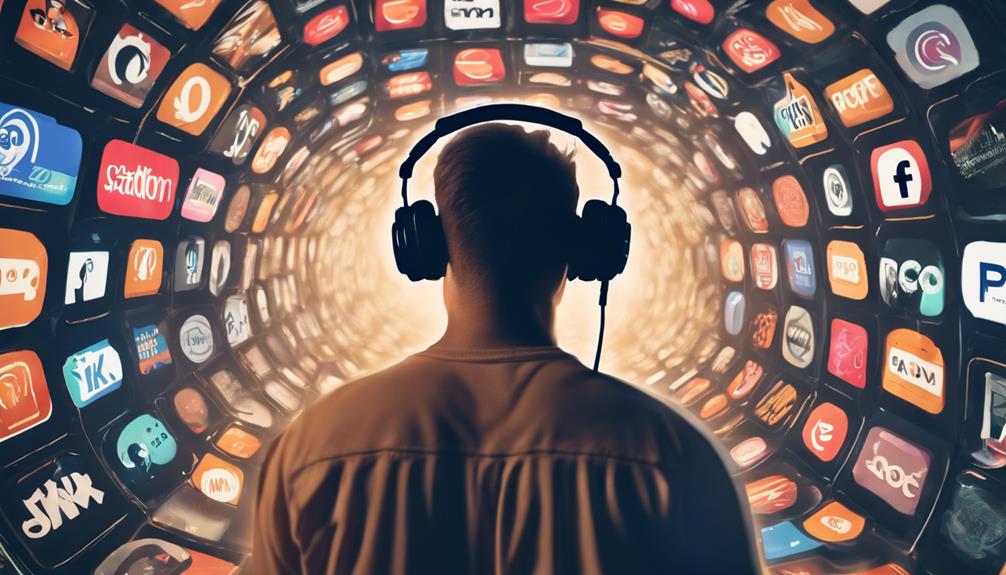
How can podcasts effectively monetize their content to maximize earnings and build a sustainable revenue stream? Podcast monetization strategies can vary, but some successful approaches include:
- Sponsorships: Partnering with brands or companies to promote their products or services during episodes can generate significant revenue for podcasts.
- Ads: Running advertisements within episodes can provide a steady income stream, especially when tailored to the interests of the podcast's audience.
- Affiliate Marketing: Promoting affiliate products or services and earning a commission for every sale made through the podcast's unique link can be a lucrative monetization strategy.
- Merchandise Sales and Listener Donations: Selling branded merchandise to loyal listeners or accepting donations from supporters can further diversify revenue streams and foster audience engagement.
Revenue Potential of Podcasting

To explore the revenue potential of podcasting, it is essential to understand the various income streams available to content creators in this dynamic industry. Podcasts offer a range of monetization avenues, with ad revenue being a significant contributor to podcasters' income. In 2022, the podcasting industry generated a staggering $18.52 billion in revenue, showcasing the substantial income potential for individuals in this field. Successful podcasters like Joe Rogan and Karen Kilgariff & Georgia Hardstark earn millions annually, highlighting the lucrative nature of podcasting. Even average podcasters with around 10,000 downloads per episode can expect to earn between $500 to $900, demonstrating the varied income opportunities available.
| Income Stream | Revenue Potential |
|---|---|
| Ad Revenue | Lucrative, projected to double by 2025 |
| Engaging Content | Key to attracting sponsors and increasing listener base |
| Monetize Strategies | Define concept, plan content, invest in quality equipment |
Podcasters can maximize their revenue potential by creating engaging content, implementing effective monetization strategies, and tapping into the growing ad revenue stream within the podcasting industry.
Maximizing Podcast Revenue
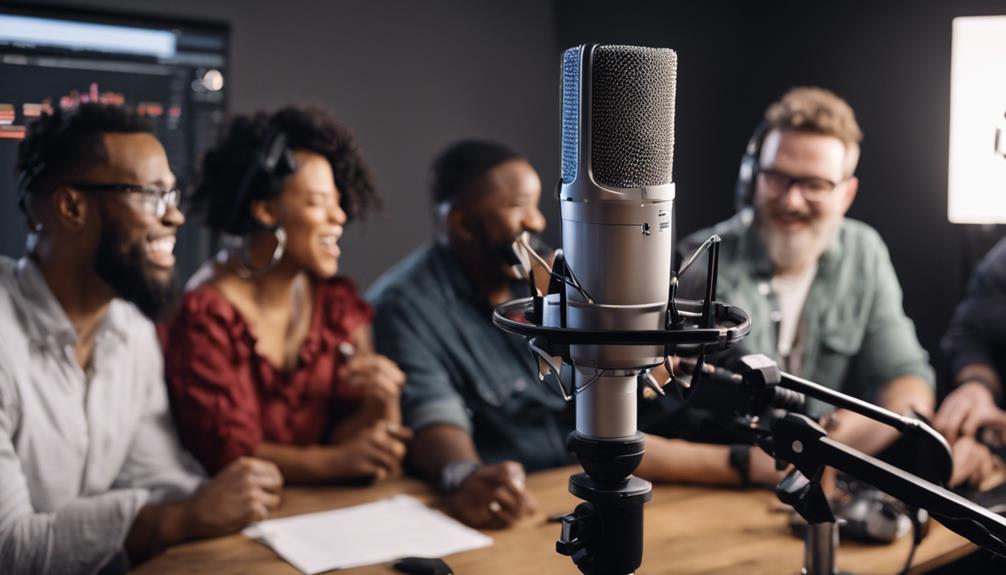
To maximize podcast revenue, we need to explore effective advertising strategies, lucrative sponsorship opportunities, and the potential for monetization through merchandise sales.
These key points can greatly enhance earnings and help in optimizing revenue streams for podcast creators.
Advertising Revenue Strategies
Maximizing podcast revenue through strategic ad placement and negotiation is essential for optimizing advertising earnings. To achieve this, consider the following strategies:
- Utilize Effective Ad Placements: Place ads strategically, such as pre-roll, mid-roll, and post-roll, to maximize impact on revenue.
- Understand Sponsor Dynamics: Gain insights into sponsor expectations and dynamics to negotiate favorable rates.
- Leverage Ad Networks: Explore opportunities with platforms like Podcorn, AdvertiseCast, and True Native Media for lucrative sponsorships.
- Optimize CPM Rates: With an average CPM of $25 for a 60-second ad, focus on negotiating rates and placements to boost podcast revenue effectively.
Sponsorship Opportunities Guide
Exploring various sponsorship opportunities can greatly enhance podcast revenue through strategic partnerships and lucrative deals. Understanding CPM rates and optimizing ad placement is key to maximizing earnings from podcast sponsorships. Top podcasts can earn millions annually through successful sponsorship deals.
Advertisers are heavily investing in podcast advertising, creating abundant opportunities for podcasters to secure profitable sponsorships. Platforms like Ad Results Media, Adopter Media, and AdvertiseCast provide avenues to connect with potential sponsors.
As your podcast audience grows, negotiating higher rates with sponsors can notably boost your sponsorship earnings. By staying informed about the latest trends in podcast advertising and actively seeking out sponsorship deals, podcasters can capitalize on the thriving market for podcast sponsorships.
Monetization Through Merchandise
Creating engaging and unique merchandise can greatly enhance a podcast's revenue streams beyond traditional advertising avenues. When considering monetization through merchandise, podcasters should keep the following in mind:
- Diversify Product Range: Offer a variety of branded apparel, accessories, and products related to the podcast's theme to attract different audience segments.
- Build Brand Loyalty: Unique and appealing merchandise can deepen the connection with listeners, fostering brand loyalty and repeat purchases.
- Utilize E-commerce Platforms: Leveraging platforms like Shopify, Teespring, or Printful can streamline the merchandise creation and sales process, making it easier to reach a wider audience.
- Maximize Revenue Streams: Successful merchandise sales provide an additional revenue stream for podcasts, contributing significantly to their overall financial sustainability.
Successful Podcast Monetization Examples

Successfully monetizing podcasts has become a lucrative endeavor for many well-known podcasters in recent years. The Joe Rogan Experience, for instance, reportedly earns millions annually, with Joe Rogan's exclusive Spotify deal valued at over $200 million.
Karen Kilgariff and Georgia Hardstark from 'My Favorite Murder' have a net worth of $40 million, showcasing successful podcast monetization. Dax Shepard's 'Armchair Expert' has also generated a net worth of $40 million through effective monetization strategies.
Bill Simmons' podcast falls within the range of $100-150 million in net worth, demonstrating the lucrative potential of successful podcast monetization. Additionally, the Chapo Trap House network earns significant annual revenue, highlighting diverse and successful podcast monetization models.
These examples underscore the various income sources and strategies that podcasters can leverage to monetize their content successfully in today's digital landscape.
Podcast Income Case Studies

In our examination of podcast income case studies, we uncover the diverse financial successes of various podcasters in the industry.
- The Joe Rogan Experience boasts annual earnings in the millions, propelled by a lucrative Spotify deal valued at a minimum of $200 million.
- Karen Kilgariff and Georgia Hardstark, hosts of 'My Favorite Murder,' have amassed a net worth of $40 million through their wildly popular podcast.
- Dax Shepard's 'Armchair Expert' not only generates substantial revenue but also contributes greatly to his impressive net worth of $40 million.
- Bill Simmons' podcast has a net worth estimated between $100-150 million, showcasing the substantial earnings potential in the podcasting world.
These case studies exemplify the vast financial opportunities available to podcasters, with shows like the Joe Rogan Experience, My Favorite Murder, Armchair Expert, and Bill Simmons' podcast showcasing the substantial wealth that can be attained through podcasting.
Podcast Earnings Vs. Effort

When contemplating podcast earnings versus effort, it's important to weigh the time invested against the potential income.
Implementing effective monetization strategies, such as sponsorships and ads, can greatly impact a podcast's growth potential.
Building a loyal audience through consistent quality content is key to maximizing earnings relative to the effort put in.
Time Vs. Income
By dedicating time and effort to building an audience and implementing effective monetization strategies, podcasters can greatly increase their income potential.
- Audience Size: A larger audience usually translates to higher earnings through sponsorships and ads.
- Engagement: Keeping your audience engaged leads to better monetization opportunities.
- Monetization Strategies: Experimenting with various strategies like ads and direct support can boost income levels.
- High-Quality Content: Consistently producing valuable content is essential for retaining a loyal audience and attracting potential sponsors.
These factors highlight the direct relationship between the time invested in audience building, engagement, and monetization efforts, and the income generated. Success in the podcasting world requires a strategic approach and a commitment to producing engaging content for your listeners.
Monetization Strategies
Implementing effective monetization strategies in podcasting requires a strategic blend of audience engagement and revenue generation tactics to maximize earnings potential. Podcasters can monetize their content through various income sources such as sponsorships, merchandise sales, and premium subscriptions.
By focusing on building a loyal audience through interactive social media engagement, live events, and exclusive content, podcasters can tap into new revenue streams and increase their podcast earnings. In today's global market, the value of successful strategies is evident, with many podcasters successfully capitalizing on monetization opportunities.
With the podcasting industry continuing to grow, leveraging audience engagement to drive revenue remains a key factor in maximizing earnings and staying competitive in the evolving landscape of podcast monetization.
Growth Potential
In order to fully grasp the potential growth of podcast earnings, one must acknowledge the direct impact of effort in content creation and audience engagement. When considering the earning potential of podcasts, the following important points should be taken into account:
- Successful podcasters like Joe Rogan and Karen Kilgariff & Georgia Hardstark exemplify the link between effort, audience connection, and earnings.
- Effort in consistently producing high-quality content is fundamental in maximizing podcast earnings.
- Monetization strategies such as sponsorships, ads, and merchandise sales play a pivotal role in enhancing the growth potential of podcasts.
- Understanding the balance between effort in content creation and audience engagement is key to realizing the full earning potential of podcasts.
Growing Your Podcast Revenue

To enhance your podcast revenue growth, focus on diversifying monetization streams and engaging with your audience consistently. By exploring various monetization opportunities such as sponsorships, ads, and platforms like Patreon, you can greatly boost your podcast revenue potential. Top podcasters like Joe Rogan, Karen Kilgariff & Georgia Hardstark, Dax Shepard, Bill Simmons, and Chapo Trap Network have shown that with the right strategies, podcasts can become lucrative ventures, earning millions annually.
Consistent delivery of valuable content is key to retaining and expanding your audience, ultimately leading to increased revenue over time. Additionally, investing in quality podcasting equipment and optimizing audio quality can enhance the listener experience, making your content more appealing to potential sponsors. Effective marketing strategies can also play an essential role in reaching a wider audience and attracting sponsorships.
Frequently Asked Questions
Can You Make Good Money With a Podcast?
Yes, podcasts offer a solid income potential when done right. By engaging our audience consistently and leveraging various revenue streams like ads and sponsorships, we can make good money podcasting.
Successful podcasters like Joe Rogan and Karen Kilgariff & Georgia Hardstark demonstrate how lucrative this platform can be. With dedication and innovation, podcasters can earn a substantial income, showcasing the financial benefits of this medium.
How Much Does a Podcast With 1,000 Listeners Make?
We estimate a podcast with 1,000 listeners could potentially earn $20-$50 per episode through advertising revenue. Sponsorships, averaging $18-$25 CPM, and direct listener support via platforms like Patreon can supplement earnings.
Diversifying with affiliate marketing or merchandise sales may boost income. Engaging with a dedicated audience of 1,000 can lead to valuable feedback, loyalty, and potential growth in earnings over time.
Who Is the Highest Paid Podcaster?
We can look to Joe Rogan as the highest-paid podcaster, with a net worth estimated at up to $250 million. His exclusive deal with Spotify alone is valued at least $200 million.
His podcast, 'The Joe Rogan Experience,' has been a major success in the industry, showcasing the significant income potential in podcasting.
Joe Rogan's success highlights the lucrative opportunities available to top podcasters.
What Is the Average Salary for a Podcaster?
We often hear people wonder about the average salary for a podcaster. It's a dynamic field, with earnings varying widely based on factors like audience size and monetization strategies.
Some podcasters with around 10,000 downloads per episode can earn between $500 to $900 on average. However, top podcasters like Joe Rogan and Karen Kilgariff & Georgia Hardstark showcase that podcasting can lead to million-dollar annual incomes.
Conclusion
To sum up, the potential earnings from podcasts vary based on factors like audience size and monetization strategies. Just like a garden with different types of flowers, podcast income can bloom with the right care and attention.
By exploring different revenue streams and consistently growing your listener base, podcasters can increase their earnings over time. So, keep nurturing your podcast like a prized garden, and watch your income grow like a beautiful bouquet.
Podcasting
How Long Should Podcasts Be?
Pondering the ideal podcast length? Find out how tailoring it impacts audience engagement and content delivery.

When considering podcast length, it's crucial to tailor it based on topic, audience, and content complexity for the best engagement. Varying lengths can cater to different preferences, with shorter episodes ideal for frequent releases and longer ones for in-depth discussions. Starting under 30 minutes and adjusting based on feedback and metrics is wise. Shorter podcasts tend to retain more listeners, benefiting from clear objectives and engaging intros. Length impacts audience engagement, with consistent duration building expectations. Analyzing popular podcast averages can guide decisions. Platform restrictions also influence length choice. By customizing lengths and observing feedback, you can optimize your podcast for success.
Key Takeaways
- Tailor length to topic, genre, and audience.
- Experiment to find optimal duration.
- Consider content complexity and format.
- Analyze competitor lengths for insights.
- Use listener feedback for adjustments.
Ideal Podcast Length Considerations
When considering the ideal podcast length, it's important to tailor it to align with the topic or genre being discussed. Different podcast formats benefit from specific episode lengths, so we need to adjust the duration to suit audience preferences. Audience demographics, such as age, gender, and schedule, play a significant role in determining the ideal podcast length. By analyzing competitors in the same niche, we can understand what works best and learn from their successes to refine our own podcast length.
New podcasters should prioritize quality content and customize episode length based on the content's purpose and target audience. This tailored approach guarantees that each episode delivers the right amount of information without overwhelming or underwhelming listeners. By adapting the length to fit the content and audience needs, we can create a more engaging and impactful podcast experience.
Benefits of Varying Podcast Lengths
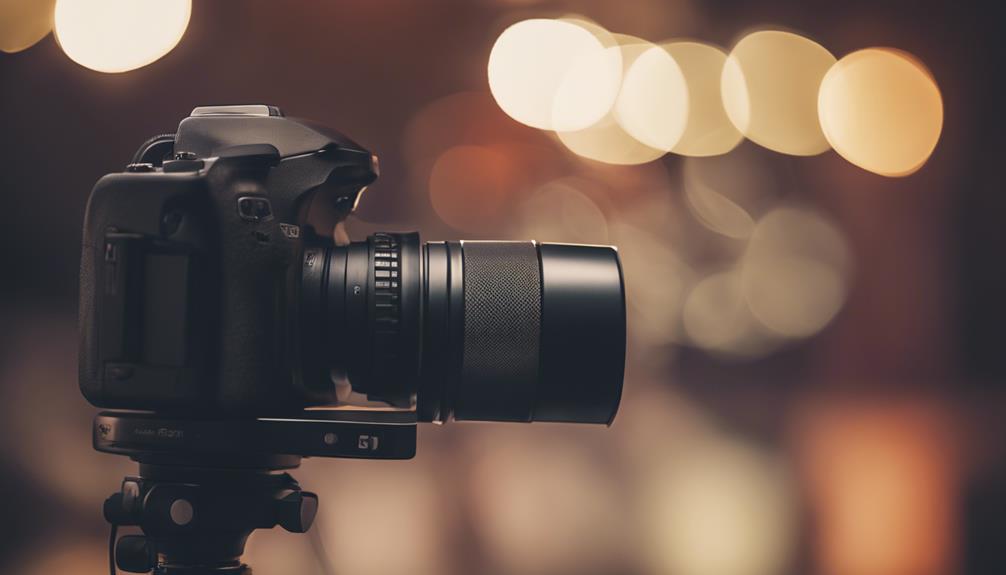
To fully grasp the advantages of varying podcast lengths, one must understand how different durations can strategically benefit both content creators and audience engagement. When it comes to episode lengths, there are several best practices to take into account:
- Catering to Diverse Preferences: Offering a mix of shorter and longer episodes can cater to a wider audience base with varying schedules and preferences, increasing overall engagement.
- Enhancing Content Depth: Longer podcasts can explore deeply into complex topics, providing detailed analysis and establishing credibility within a niche, attracting subscribers seeking thorough discussions.
- Maximizing Productivity: Shorter podcasts can boost productivity by allowing for more frequent releases, keeping the audience consistently engaged and attracting subscribers looking for quick, informative content.
Tailoring Podcast Length to Content

Tailoring podcast length to content requires a deep understanding of the intended message and audience preferences. When crafting episodes, it's crucial to take into account the purpose of the content and the expectations of listeners. For in-depth discussions or complex topics, longer episode lengths may be appropriate to explore thoroughly the subject matter and provide detailed insights. On the other hand, quick tips or light-hearted content may resonate better with shorter episodes to maintain listener engagement and cater to shorter attention spans.
Moreover, different podcast formats lend themselves to varying episode lengths. Narrative storytelling might benefit from longer episodes to build suspense and captivate audiences, while interviews or news updates could be more effective in shorter, snappier formats. By adapting the episode length to fit the specific format and content style, podcast creators can optimize listener experience and maximize impact.
Consistency in episode lengths can also play an important role in retaining loyal listeners and establishing a predictable schedule. Analyzing listener feedback and engagement metrics can further guide decisions on adjusting episode lengths to ensure they align with audience preferences and deliver the intended message effectively.
Analyzing Popular Podcast Show Lengths

Exploring the landscape of popular podcasts, we analyze the varied show lengths to uncover insights into audience preferences and genre-specific trends. When delving into the world of podcast episodes, it's fascinating to note the diversity in average podcast episode length across different genres.
Here are some key points to explore:
- The average length of the top 100 podcasts is 38 minutes and 10 seconds, showcasing the range of podcast durations that cater to various audience preferences.
- Comedy podcasts tend to have longer episodes, with an average length of 55 minutes and 33 seconds, while news and politics podcasts are typically shorter, averaging 28 minutes and 1 second per episode.
- Longer podcasts may offer more in-depth discussions and storytelling, attracting listeners who enjoy immersive content experiences and detailed explorations of various topics.
Analyzing popular podcast show lengths provides valuable insights into how different genres approach episode durations, catering to the diverse preferences of podcast audiences in innovative ways.
Tips for Choosing Podcast Duration
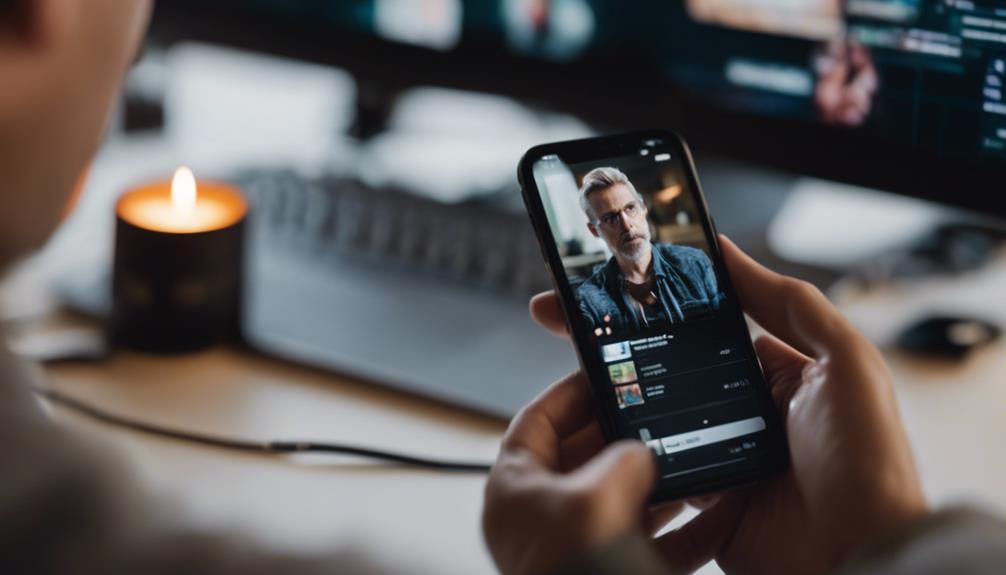
Considering the purpose and target audience is vital when determining the ideal length for your podcast episodes. Tailoring your podcast length based on the content's focus and the preferences of your listeners is key to maximizing engagement.
New podcasters shouldn't feel pressured to match longer shows; instead, start with a duration that aligns with your content and resonates with your audience. The topic and format of your podcast play a significant role in deciding the ideal episode duration.
It's important to listen to listener feedback and observe engagement metrics to guide your decision on the length of your episodes. If you're just starting out, aiming for podcasts under 30 minutes initially can help you test audience preferences and fine-tune your content strategy.
Ultimately, finding the right balance between podcast length and listener engagement is a dynamic process that may evolve as your show grows and your audience's preferences become clearer.
Understanding Listener Habits and Preferences
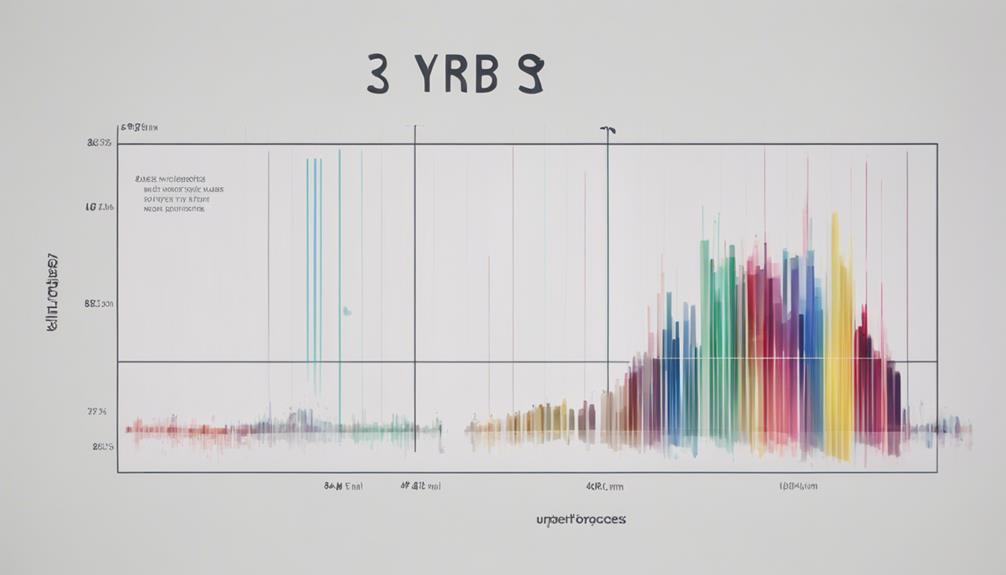
When it comes to podcasts, understanding listener habits and preferences is essential.
Our attention span, preferred episode length, and the impact on engagement are vital factors to take into account.
Tailoring content to match what our audience wants can make a significant difference in attracting and keeping loyal listeners.
Listener Attention Span
Understanding listener habits and preferences is essential for creating engaging podcast content that aligns with audience expectations and attention spans.
Listeners prefer concise and to-the-point podcasts to cater to their shorter attention spans.
The average podcast length favored by audiences falls within the range of 20 to 40 minutes.
Shorter podcasts, some as brief as 4-5 minutes, are gaining popularity due to time constraints.
Preferred Episode Length
Analyzing listener preferences reveals a clear trend towards podcast episodes ranging from 20 to 40 minutes for peak engagement and retention. Data indicates that 52% of listeners prefer this duration, showing a significant correlation between episode length and audience engagement.
While some enjoy shorter or longer formats, tailoring content to fit within the 20-40 minute range can enhance listener satisfaction. Striking a balance is essential, as extremes may lead to decreased retention rates.
Consistency in episode length fosters a loyal listener base and establishes predictability, key factors in maintaining engagement. By aligning with these preferences, podcast creators can optimize engagement levels and create a more enjoyable listening experience for their audience.
Impact on Engagement
Moving from the discussion on preferred episode lengths, we can observe a direct link between the duration of podcasts and audience engagement levels. When considering the best podcast length, it's essential to keep listeners engaged throughout the episode.
Here are some insights on the impact of podcast duration on engagement:
- Listeners prefer podcasts between 20 to 40 minutes for maximum engagement.
- Data shows that 52% of listeners prefer podcasts in the 20-40 minute range.
- Splitting long episodes into shorter segments can enhance listener engagement and retention.
Understanding listener habits and preferences is key to determining the ideal length of a podcast, ultimately leading to higher engagement levels and a more satisfied audience.
Frequently Asked Questions
What Is the Average Podcast Length?
The average podcast length stands at 41 minutes and 31 seconds, based on Dan Mineser's study. Listeners tend to lean towards shorter episodes, although successful podcasts like The Daily (20-25 mins) and The Joe Rogan Experience (1-3+ hours) vary in length.
Tailoring episode duration to match topics and audience preferences is important. When deciding on podcast length, factors such as topic, format, and listener demographics should guide our choices for maximum impact and engagement.
How Long Should a Podcast Into Be?
When it comes to podcast intros, our strategy is crystal clear. We aim for 15 to 30 seconds of engaging content to set the tone right.
Crafting a compelling intro is key, avoiding lengthy intros that might bore listeners. To make a lasting impression, we tailor intro length to match the content's depth and context.
Our goal is to keep things concise while sparking curiosity and drawing in our audience from the get-go.
Is 5 Minutes Too Short for a Podcast?
Five minutes can be suitable for a podcast, especially for quick updates or brief insights. Although shorter than the average podcast length, it can be effective in delivering concise content.
Consider the purpose and audience when deciding on the duration. In today's fast-paced world, shorter podcasts can cater to those with limited time. Flexibility in podcast length allows for versatility in content creation and audience engagement.
Is 2 Hours Too Long for a Podcast?
We believe that 2 hours can be a suitable podcast length, depending on the content and audience preferences. Some successful shows, such as The Joe Rogan Experience, excel with longer episodes.
Tailoring episode duration to your topic, format, and listener expectations is essential for engagement. By providing valuable and engaging content, a 2-hour podcast can captivate audiences who enjoy in-depth discussions or immersive storytelling experiences.
Conclusion
In the end, the ideal length for a podcast depends on various factors such as content, audience preferences, and engagement.
So, how long should podcasts be? Well, the answer is simple: as long as it needs to be to deliver valuable and engaging content to your listeners.
By understanding your audience and tailoring your podcast length accordingly, you can keep them interested and coming back for more.
Podcasting
Do Podcasts Count as Screen Time?
Tune in to uncover the surprising connection between podcasts and screen time, influencing your habits and well-being.

Podcasts do count as screen time since they require electronic devices for playback, which can lead to issues like eye strain and sedentary behavior. It is crucial to establish boundaries and monitor podcast consumption to maintain a healthy balance in screen time habits. Integrating physical activity while listening to podcasts can counteract sedentary habits and contribute to overall well-being. Being mindful of podcast consumption, setting intentions before listening, and avoiding constant background noise can enhance the listening experience. By aiming for a balance between podcasts and other activities, one can promote a holistic approach to screen time management.
Key Takeaways
- Podcasts contribute to screen time due to device usage.
- Listening to podcasts on electronic devices increases screen exposure.
- Screen time concerns arise from prolonged podcast consumption.
- Monitoring podcast consumption aids in managing screen time.
- Setting boundaries for podcast listening is essential for a balanced screen time routine.
Impact of Podcast Listening on Screen Time
Listening to podcasts adds to our screen time, requiring electronic devices for playback. As we indulge in listening to podcasts, we often spend much time staring at screens, whether it's a smartphone, tablet, or computer. This prolonged exposure contributes to our overall screen time usage.
While podcasts offer a convenient way to consume content, it's important to be mindful of how much time we allocate to this activity. Excessive podcast consumption can lead to negative impacts on our well-being, such as eye strain, poor posture, and a sedentary lifestyle.
To strike a balance, it's vital to monitor the amount of time we spend listening to podcasts and actively manage our screen time. Setting limits and boundaries on podcast consumption can help regulate our overall screen time usage and make sure that we engage in a diverse range of activities. By being mindful of our podcast habits and making adjustments as needed, we can maintain a healthy equilibrium between screen time and other aspects of our lives.
Setting Boundaries for Podcast Consumption

Setting boundaries for podcast consumption is essential to managing our screen time effectively. By monitoring and adjusting our podcast habits regularly, we can prevent excessive screen time and establish a balanced media consumption approach.
Including podcasts within our overall screen time limits helps create a healthier balance between screen time and other activities.
Time Management Tips
How can we effectively manage our podcast consumption to guarantee a balanced lifestyle and productive screen time habits?
Setting time limits for podcast consumption is crucial to managing overall screen time. By allocating specific times for listening to podcasts, we can prevent excessive screen time habits and boost productivity.
Establishing boundaries for podcast listening ensures it doesn't interfere with important activities or responsibilities. Monitoring podcast consumption helps us assess screen time habits and make necessary adjustments for a healthier balance.
Integrating podcasts into a structured routine can enhance enjoyment without letting them dominate daily screen time. By implementing these strategies, we can enjoy podcasts while maintaining a healthy balance in our overall screen time usage.
Listening Habits Tracking
To maintain a balanced lifestyle and optimize screen time habits, we need to establish clear limits on our daily podcast consumption. Here are three key ways to track our listening habits effectively:
- Utilize Tracking Apps: Explore apps that monitor podcast listening duration to gain insights into screen use patterns.
- Set Specific Time Slots: Allocate dedicated times for podcast listening to control and count as screen time usage consciously.
- Introduce Breaks: Implement intervals between episodes to reduce prolonged exposure to screens and maintain a healthy balance.
Limiting Exposure Duration
Maintaining a balanced lifestyle involves consciously monitoring podcast consumption to limit screen time exposure effectively. By setting boundaries for podcast consumption, we can prevent excessive screen time and guarantee a healthy balance of screen-based activities. Establishing time limits for listening to podcasts and regularly monitoring and adjusting podcast habits contribute to a well-rounded screen time routine. Including podcasts within overall screen time limits is crucial for promoting a healthy lifestyle that encompasses various activities. Balancing podcast enjoyment with other pursuits fosters a holistic approach to screen time management.
| Benefits of Limiting Exposure Duration | |
|---|---|
| Prevents excessive screen time | Establishes healthy screen time habits |
| Promotes a balanced lifestyle | Encourages diverse activities |
| Enhances overall well-being | Supports holistic screen time management |
| Fosters a healthy relationship with technology | Ensures a varied routine |
Monitoring Podcast Usage for Balance
Monitoring our podcast usage for balance is important to guarantee we maintain a healthy relationship with screen time. To achieve this, we can implement the following strategies:
- Setting Clear Limits: Establish specific time frames for podcast listening to prevent it from overshadowing other essential activities and hobbies. This helps in ensuring a well-rounded lifestyle and prevents excessive screen time.
- Regular Evaluation: Periodically assess your podcast consumption habits to identify any patterns of overindulgence. Adjusting your listening habits accordingly can contribute to maintaining a healthy balance between screen time and other activities.
- Diversifying Activities: Incorporate a variety of activities into your daily routine to reduce reliance on podcasts for entertainment. Engaging in physical activities, hobbies, or social interactions can provide a rejuvenating break from screen time and contribute to overall well-being.
Podcasts and Physical Activity Levels

Listening to podcasts for extended periods can impact our physical activity levels and overall health. Excessive consumption of podcasts has the potential to reduce the time we spend engaging in physical activities, leading to a more sedentary lifestyle.
Finding a balance between enjoying podcasts and incorporating movement to promote overall well-being is crucial. While podcasts are a convenient form of entertainment, it's vital to be mindful of the impact they can have on our activity levels.
By finding ways to integrate physical activities such as walking, stretching, or even light exercises while listening to podcasts, we can counteract the sedentary nature of prolonged listening sessions.
Being conscious of our physical activity levels and making an effort to stay active while consuming podcasts can help us maintain a healthier and more balanced lifestyle. So, next time you tune in to your favorite podcast, consider pairing it with some form of movement to support your overall well-being.
Mindful Consumption of Podcasts

While podcasts offer a convenient form of entertainment, practicing mindfulness in our consumption can help us manage screen time effectively and maintain a healthy balance of digital consumption. Here are three ways to cultivate mindful podcast consumption:
- Set Intentions: Before diving into a podcast episode, take a moment to reflect on why you're listening. Are you seeking information, entertainment, or relaxation? Setting intentions can help you stay focused and avoid mindless scrolling through endless episodes.
- Establish Boundaries: Just like with any form of media consumption, it's essential to set boundaries for podcast listening. Allocate specific times for listening and avoid using podcasts as constant background noise. By creating limits, you can prevent excessive screen time usage.
- Engage Actively: Instead of passively absorbing content, try to engage actively with the podcast. Take notes, reflect on the information presented, or discuss it with others. Active engagement not only enhances your listening experience but also reduces the likelihood of mindless consumption.
Incorporating Exercise With Podcasts

To enhance physical activity levels while enjoying podcasts, integrating exercise routines can be a beneficial approach. Incorporating movement into your podcast listening routine can counteract the sedentary nature of the activity.
Consider going for a walk or jog while tuning in to your favorite shows, or opt for bodyweight exercises like squats, lunges, or planks during podcast sessions. This innovative approach not only boosts your physical activity but also allows you to consume podcasts without compromising your health.
By pairing exercise with podcast listening, you can strike a balance between screen time and movement, promoting overall well-being. Remember, being mindful of your physical activity levels is key to living a balanced lifestyle.
Striving for a Balanced Lifestyle

Maintaining a balanced lifestyle involves prioritizing physical activity and face-to-face interactions for overall well-being. To work towards a balanced lifestyle, consider the following:
- Screen Time Impact: Acknowledge how screen time affects your well-being. By being mindful of the time spent on electronic devices, you can make room for other enriching activities.
- Offline Entertainment: Seek out offline entertainment options to create a healthy balance between screen-based and screen-free activities. Engaging in hobbies that don't involve screens can help reduce reliance on technology.
- Variety in Leisure Pursuits: Embrace a diverse range of leisure activities to foster a more balanced approach to screen time. By exploring different interests and hobbies, you can discover new passions and reduce the time spent in front of screens.
Working towards a balanced lifestyle involves making conscious choices to prioritize activities that promote physical well-being and meaningful connections with others.
Frequently Asked Questions
What Counts as Screen Time on Iphone?
On iPhone, screen time encompasses app and website usage tracking. It logs time spent on various platforms and allows customization for limiting usage.
Notifications warn us when nearing set limits, aiding in effective device management.
What Does Not Count as Screen Time?
Listening to podcasts with the screen off doesn't contribute to screen time. Passive consumption of podcasts involves no active screen engagement. Screen time is only logged when the device screen is actively in use.
Enjoying podcasts without visual elements doesn't add to screen time. Engaging in podcast listening without screen interaction helps reduce overall screen time.
Does Using Spotify Count as Screen Time?
Using Spotify contributes to screen time when actively engaging with the app. While listening to podcasts with the screen off may not count as screen time, interacting with the app or browsing through its interface does.
It's essential to be mindful of our interactions with technology to manage screen time effectively. Balancing our usage by enjoying music with the screen off can help reduce overall screen time.
Does Reading Online Count as Screen Time?
When considering screen time, reading online does count since it involves using a digital device. This activity may lead to eye strain and fatigue like other screen-based tasks.
E-books and online platforms provide easy access to diverse reading materials but require monitoring for a balanced digital lifestyle. Setting limits on online reading can help manage overall screen time.
It's essential to find a healthy balance between screen activities and other pursuits for best well-being.
Conclusion
In summary, podcasts can be a valuable source of information and entertainment, but it's important to balance their consumption with other activities to maintain a healthy lifestyle.
Setting boundaries, monitoring usage, and incorporating physical activity can help guarantee a well-rounded approach to podcast listening.
By being mindful of how we engage with podcasts, we can aim for a balanced lifestyle that promotes both mental stimulation and physical well-being.
Podcasting
Exploring Podcasts as Social Media
Step into the world of podcasts as social media, where audio content transforms into community connections that will leave you intrigued.
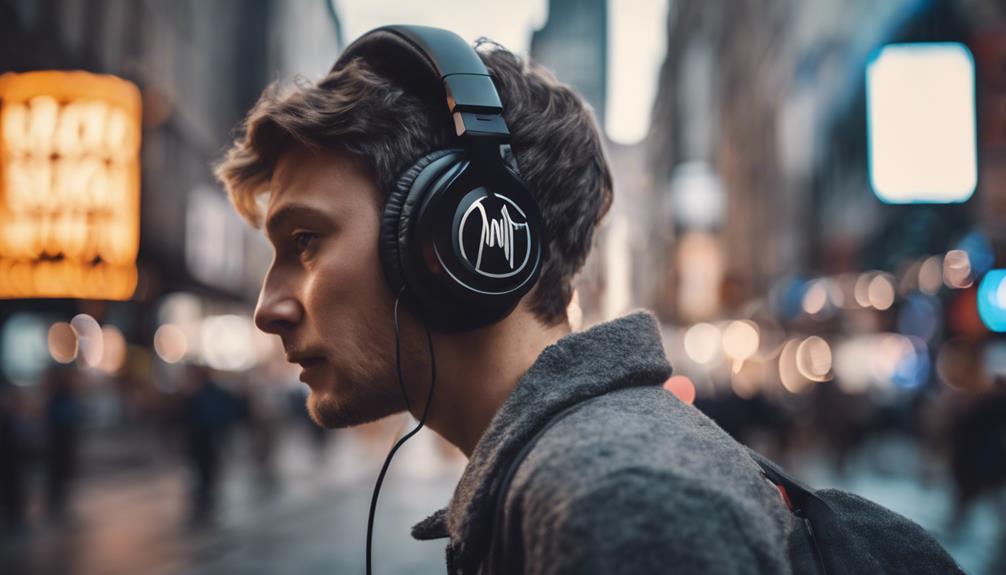
When exploring podcasts as social media, we discover how audio content engages audiences and fosters community connections. By leveraging visual strategies, engaging techniques like polls and questions, and sharing behind-the-scenes content, podcasts create an interactive and authentic experience. Humanizing the podcast by sharing personal stories and actively connecting with listeners enhances audience loyalty and connection. Through these means, podcasts serve as a powerful tool for building a dedicated community and fostering meaningful relationships. Embrace the potential of podcasts as a unique avenue to connect, engage, and build a loyal audience with your audio content endeavors.
Key Takeaways
- Podcasts offer a unique social media platform for engagement and interaction.
- They facilitate direct communication, community building, and audience connection.
- Podcasts humanize content creation, sharing behind-the-scenes, and personal stories.
- Utilize interactive features like polls, Q&A sessions, and behind-the-scenes content.
- Podcasts enhance engagement, build loyalty, and create a connected audience.
Visual Content Strategies
We leverage various visual tools and platforms to create engaging graphics and videos that enhance our podcast's social media presence and attract a wider audience. By incorporating teaser videos that offer intriguing snippets from our episodes, we generate interest and curiosity among our followers on platforms like Facebook and Instagram.
Additionally, utilizing episode artwork with compelling captions across our social profiles has proven effective in attracting attention and increasing engagement levels. Our strategy includes the creation of attention-grabbing graphics and video content that not only grab the audience's attention but also encourage them to listen to our podcast episodes.
Through the use of platforms like Riverside FM, we're able to produce high-quality video files for social media sharing, further enhancing our visual content strategies and ensuring that our podcast stands out in the crowded social media landscape.
Audience Engagement Techniques

Exploring different methods to connect with our audience on social media is essential for fostering a dynamic and interactive community around our podcast. To enhance engagement, we can implement the following techniques:
- Utilize Polls on Instagram Stories: Engage with your audience through interactive polls to gather their opinions and boost engagement by up to 20%.
- Incorporate Audience Questions: Encourage participation by asking your listeners questions on platforms like Facebook, increasing audience interaction and fostering a sense of community.
- Share Bloopers and Outtakes: Offering a glimpse behind the curtain with bloopers and outtakes can lead to a 25% increase in listener loyalty, as it adds a human touch and authenticity to your content.
These innovative engagement strategies won't only strengthen our social media presence but also create a more connected and involved audience for our podcast. By leveraging interactive features and behind-the-scenes content, we can cultivate a loyal listener base and drive growth in our online community.
Behind-the-Scenes Content Sharing
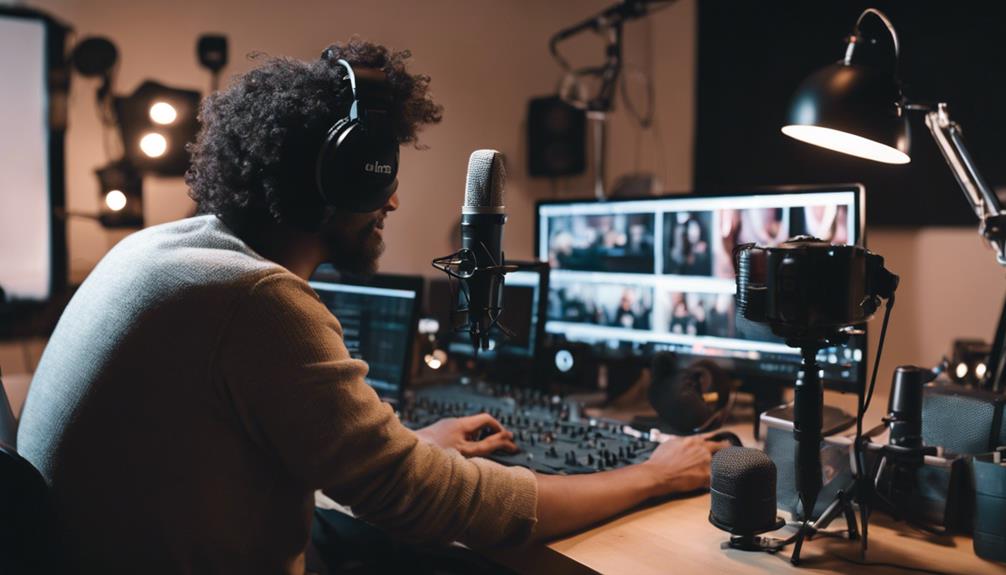
Sharing behind-the-scenes content from podcast recording sessions adds authenticity and personalizes the listener experience. This type of content allows us to connect with our audience on a more intimate level, showcasing the human side of the podcast creation process.
By posting behind-the-scenes photos, videos, bloopers, and outtakes, we create a relatable and engaging atmosphere that strengthens our bond with listeners. Through platforms like TikTok or Instagram Reels, we can highlight the most exciting moments of our episodes, generating interest and interaction.
Providing a glimpse into our creative process not only humanizes the podcast but also fosters a sense of community with our audience. By sharing the personalities behind the podcast, we build a stronger connection with our listeners, making them feel like they're part of the journey.
This behind-the-scenes content strategy enhances engagement, authenticity, and personalization, ultimately enriching the overall podcast experience.
Leveraging Polls and Questions
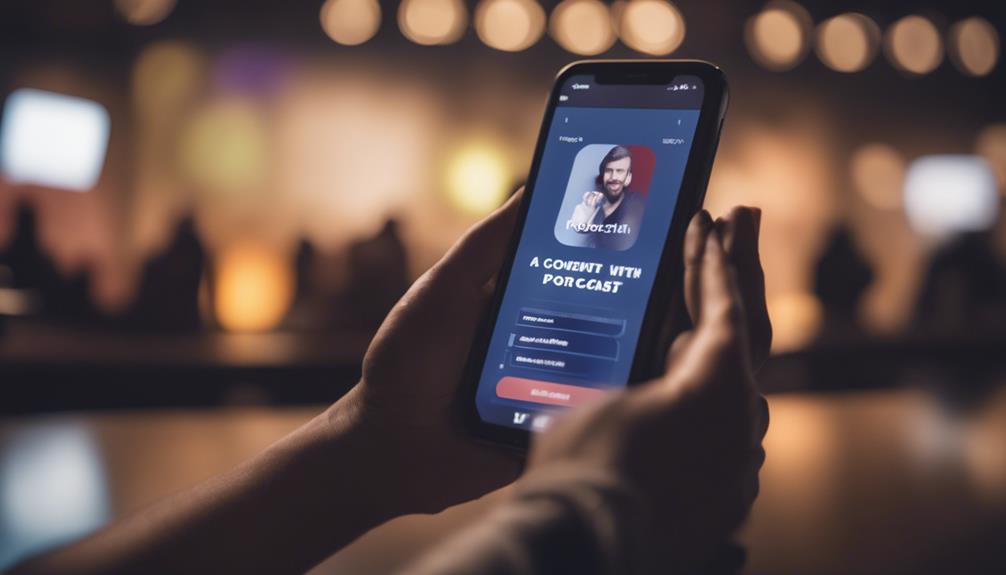
When it comes to leveraging polls and questions on social media for our podcast, we can engage our audience effectively with interactive features.
Encouraging listeners to participate in polls and answer questions can foster a sense of community and increase engagement.
Gathering opinions through these tools allows us to tailor our content to meet the preferences of our audience, enhancing their overall experience.
Engaging Audience With Polls
Engaging our audience with polls and questions is a dynamic strategy to enhance interaction and gather valuable insights for our podcast.
By leveraging polls on platforms like LinkedIn or Instagram Stories, we can gather feedback on podcast-related questions, sparking engaging conversations.
Utilizing Story Prompts on Instagram and Facebook Stories can further enhance audience engagement, creating interactive dialogues around our episode topics.
Interactive features such as polls, questions, and surveys on social media platforms not only foster audience interaction but also help us tailor content to listener preferences.
This approach allows us to gain insights into what our audience enjoys and desires, ultimately improving the overall podcast experience.
Encouraging Interaction Through Questions
To enhance audience interaction and gather valuable insights for our podcast, we actively encourage participation through leveraging polls and questions on various social media platforms.
Utilizing interactive features like polls on platforms such as LinkedIn or Instagram Stories can engage the audience with thought-provoking questions related to podcast topics. By incorporating story prompts on Instagram and Facebook, we stimulate audience participation and spark conversations around specific discussion topics.
These interactive elements not only enhance listener engagement but also provide a platform for gathering valuable listener feedback. Through polls and questions, we can gain deeper insights into audience preferences and interests, allowing us to tailor our podcast content to better align with the desires of our listeners.
Gathering Listener Opinions
Leveraging polls and questions on social media platforms is a valuable strategy to gather listener opinions and preferences for our podcast. By utilizing interactive features like polls and questions, we can guarantee real-time engagement with our audience, sparking insightful conversations and receiving immediate feedback.
These tools allow us to tailor our podcast content based on listener preferences and interests, ultimately enhancing audience engagement and building a strong sense of community around our podcast. It's through these polls and questions that we can truly understand what our listeners enjoy and what they want to hear more of, creating a dynamic and interactive podcast experience that resonates with our audience.
Interactive Features for Conversations
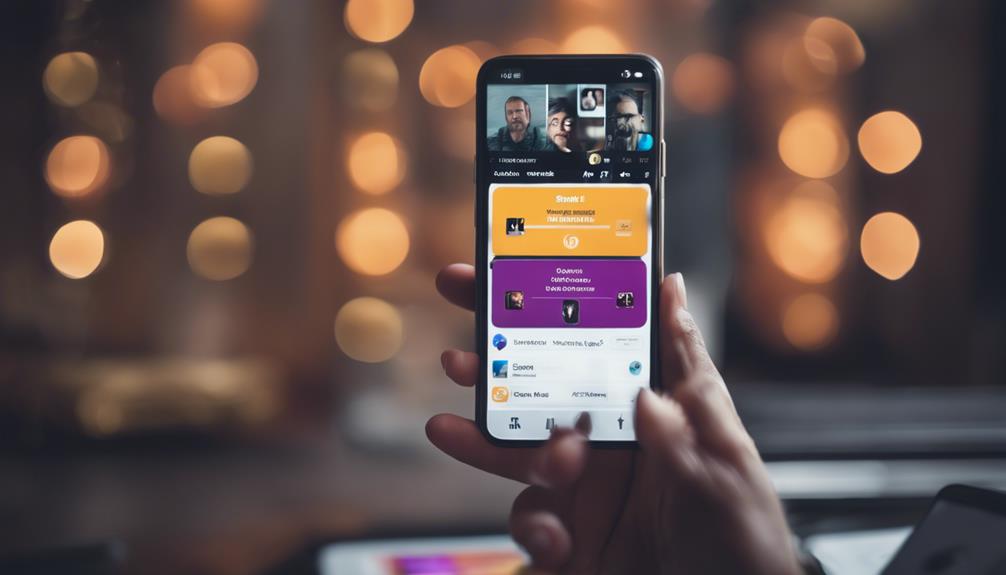
Utilizing polls and surveys across various social media platforms can effectively enhance conversations and audience engagement surrounding podcast topics. By incorporating interactive features like polls on Instagram Stories or thought-provoking questions on LinkedIn, podcast creators can encourage audience interaction and gather valuable feedback. These interactive elements not only spark discussions but also provide insights into listener preferences, helping shape future episodes to cater to the audience's interests.
| Interactive Feature | Platform | Purpose |
|---|---|---|
| Polls | Instagram Stories | Gather feedback and spark conversations |
| Surveys | Any social media | Gain insights into listener preferences |
| Questions | Encourage engagement and dialogue |
Engaging with listeners through these interactive features fosters a sense of community and makes the podcast more engaging. By leveraging these tools, podcast creators can enhance listener participation, create a dialogue, and build a strong community around their podcast content.
Authenticity Through BTS Content

Sharing behind-the-scenes content from podcast recording sessions humanizes the content creation process, adding authenticity and building a stronger connection with listeners. By offering glimpses of the work behind the final product, podcasts become more relatable and engaging. Incorporating bloopers and outtakes into social media branding not only adds humor but also showcases the genuine nature of the podcast hosts. Posting episode highlights on platforms like TikTok or Instagram Reels enhances audience engagement by highlighting key moments and creating anticipation for new episodes.
This behind-the-scenes approach to content creation adds depth to the podcast experience, allowing listeners to feel more connected to the hosts and the overall brand. It demonstrates transparency and authenticity, which are highly valued in today's social media landscape. By sharing these behind-the-scenes moments, podcasts can create a sense of community and loyalty among their listeners, ultimately leading to a more meaningful and enjoyable listening experience.
Humanizing the Podcast Experience

To enhance the podcast experience, we consistently share behind-the-scenes content that humanizes our storytelling process. By offering a peek into our creative journey, such as sharing BTS photos and videos, we bring our audience closer to the heart of our podcast. These behind-the-scenes glimpses not only add authenticity but also create a more engaging and relatable connection with our listeners. Additionally, sharing bloopers and outtakes on social media platforms injects humor and a sense of realness into our content, further strengthening the bond with our audience.
Incorporating engaging episode highlights on various platforms like TikTok or Instagram Reels serves as a strategic marketing tool to capture audience interest and curiosity. Through these snippets, we provide a preview of our podcast episodes, enticing listeners to tune in and discover more. By humanizing our podcast experience with behind-the-scenes content and authentic glimpses into our creative process, we aim to deliver a compelling and immersive storytelling platform that resonates with our audience on a deeper level.
Strengthening Audience Connection

To build a stronger connection with our audience, actively engaging with listeners through comments and messages is key. By utilizing platforms like Instagram, we can create a more personal interaction with our audience.
Hosting live Q&A sessions or discussions allows for real-time feedback, fostering a sense of community. Sharing personal stories or experiences on social media work to humanize the podcast, making it more relatable and engaging.
Responding promptly to audience inquiries or feedback demonstrates attentiveness and care, showing listeners that their opinions matter. Understanding audience preferences through analytics can help tailor content to better connect with listeners.
Engaging with your audience in these ways not only strengthens the connection with current listeners but can also attract new ones. Real-world examples of successful engagement strategies can help you gain insights into how to effectively connect with your audience and foster a loyal following.
Frequently Asked Questions
Are Podcasts a Form of Social Media?
Podcasts aren't classified as social media platforms, but they can be shared and promoted through social channels. Social media platforms like Twitter, Facebook, and Instagram are essential for engaging with podcast audiences and boosting episode visibility.
While podcasts stand alone, leveraging social media can greatly enhance their growth and engagement with listeners. Integrating podcasts with social strategies amplifies reach, fosters interactions, and builds a strong community around the content.
How Do I Explore Podcasts?
When delving into podcasts, we immerse ourselves in a vast world of audio content waiting to be discovered. From enriching interviews to enthralling storytelling, podcasts offer a plethora of topics to engage with.
By tuning in through popular platforms like Apple Podcasts or Spotify, we gain access to a treasure trove of knowledge and entertainment.
What Social Media Platform Is Best for Podcasts?
We believe Instagram is the best social media platform for podcasts due to its visual-focused nature, perfect for sharing podcast-related visuals and behind-the-scenes insights.
Twitter's real-time updates and engagement opportunities make it ideal for quick interactions with a broad audience.
Facebook fosters community building and longer-form content sharing, creating discussions around podcast episodes.
LinkedIn's professional networking capabilities and TikTok's creative short-form videos also offer unique ways to promote podcast content effectively.
How Do You Promote a Podcast on Social Media?
We promote a podcast on social media by utilizing teaser clips, running contests, collaborating with influencers, and incorporating relevant hashtags. Engaging with listeners through polls, Q&A sessions, and live streams fosters a sense of community.
Conclusion
To wrap up, podcasts provide a unique and engaging platform for social media interaction. By including visual content, interactive audience techniques, and behind-the-scenes sharing, podcasts can enhance connections with listeners.
Remember, 'Two heads are better than one' when it comes to creating a dynamic and interactive podcast experience. So, explore the possibilities and witness your podcast community thrive!
-
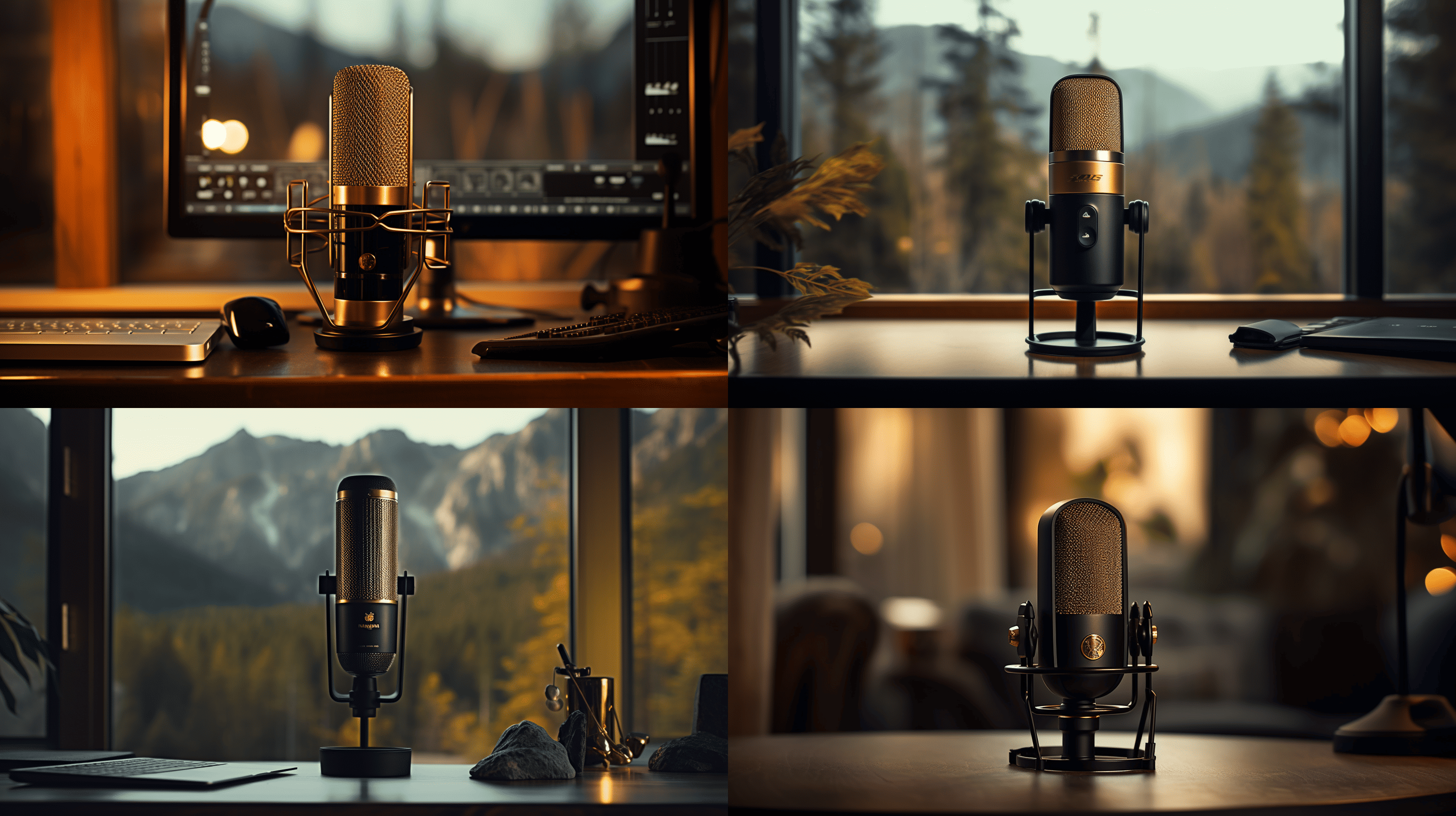
 Microphone2 weeks ago
Microphone2 weeks agoUnleash Your Inner Podcaster: Discover the Best Microphone for Crisp, Clear Audio
-

 Music Theory3 weeks ago
Music Theory3 weeks agoUnlocking Nature’s Harmony: The Power of 432 Hz Frequency in Sound & Music for Enhanced Living and Well-Being
-

 Native Instruments Kontakt3 weeks ago
Native Instruments Kontakt3 weeks agoVOCAL AI – Animated Intelligence: The Ultimate Vocal Playground
-

 Sound Design3 weeks ago
Sound Design3 weeks agoWhat Is the Difference Between a Sound Engineer and A Sound Designer?
-

 Sound Design3 weeks ago
Sound Design3 weeks agoWhy Sound Engineer
-

 Composing3 weeks ago
Composing3 weeks agoMUTILATED NOISE by SampleTraxx: The Next Generation Sound Collection
-

 Audio Production3 days ago
Audio Production3 days agoUnleashing Sound Therapy: Incorporating Acoustic Design in a Wellness Centre
-

 Expert Guides3 weeks ago
Expert Guides3 weeks agoHow Do You Become a Sound Designer















